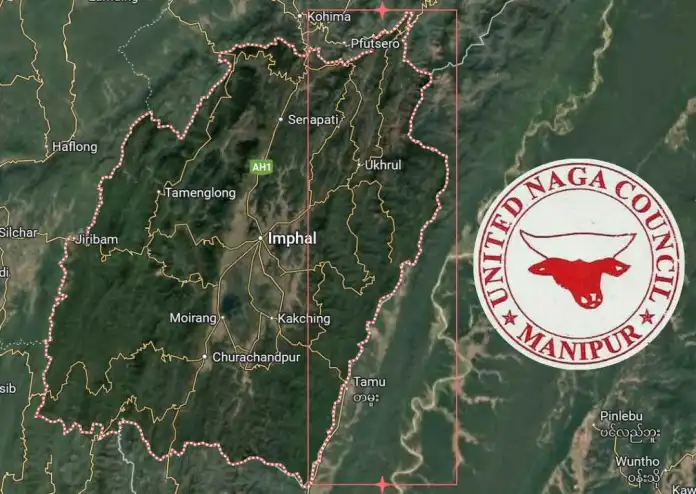Manipur CM to Attend Inauguration of Sardar Patel Statue and Museum of Valor in Arunachal Pradesh
Summary
Manipur’s Chief Minister is set to attend the inauguration of a significant cultural site in Arunachal Pradesh—the Sardar Patel statue and Museum of Valor. This event symbolizes the historical legacy of Sardar Patel and his role in India’s unification, highlighting his contributions and fostering national unity.
Full Article: Unveiling the Legacy of Sardar Patel in Arunachal Pradesh
Introduction: A Tribute to the Architect of Indian Unity
Imagine India’s map without the seamless union of states we see today. One man who was central to achieving this unity was Sardar Vallabhbhai Patel, often hailed as the “Iron Man of India.” Now, in a tribute to his vision and dedication, a statue and a Museum of Valor are set to be unveiled in Arunachal Pradesh. This momentous event will be graced by Manipur’s Chief Minister, who is committed to paying homage to Patel’s legacy and encouraging stronger regional unity.
Through this museum and statue, the government aims to promote not only Patel’s historical significance but also a renewed commitment to unity and cultural integrity. This article will explore the event’s significance, Patel’s legacy, and how this gesture strengthens the bonds between northeastern states and the rest of India.
The Importance of Sardar Patel in Modern India
Patel’s Vision and Role in Unifying India
At the time of India’s independence, the country was a patchwork of princely states, each with unique treaties, interests, and governance structures. Patel, as India’s first Home Minister, took on the daunting task of unifying these regions, a mission that required both diplomacy and a clear, unwavering vision for an integrated India. His work in integrating 562 princely states transformed India’s political landscape, bringing it together under one flag.
Arunachal’s Tribute to National Unity
By establishing the Sardar Patel statue and Museum of Valor in Arunachal Pradesh, the northeastern region celebrates this legacy of unity and respects Patel’s role in shaping a cohesive India. This tribute in Arunachal holds unique importance, as it symbolizes inclusivity, reinforcing that northeastern states are an integral part of India’s heritage and future.
What the Museum of Valor Represents
1. Honoring National Heroes
The Museum of Valor aims to immortalize not only Patel but also other Indian heroes who have shaped the nation’s history. Exhibits within the museum will highlight key moments in India’s fight for independence, Patel’s strategies in unifying the nation, and the contributions of other patriots, creating a comprehensive narrative that young generations can learn from.
2. A Source of Inspiration
The museum serves as a reminder of the resilience and courage needed to achieve unity. It will likely feature interactive displays, multimedia exhibits, and artifacts from the era, offering an immersive experience that reflects the struggles and victories of India’s journey to independence.
3. Strengthening Bonds in the Northeast
The choice of Arunachal Pradesh as the site for this tribute is strategic, reinforcing that northeastern states are central to India’s identity. This gesture aims to forge stronger bonds between the people of the Northeast and other parts of the country, showcasing the importance of national unity.
The Cultural and Political Significance of the Statue and Museum
1. Promoting Tourism and Cultural Awareness
The unveiling of a significant statue and museum will likely boost tourism, drawing visitors to Arunachal Pradesh and giving the state a new cultural landmark. This influx of tourists can lead to an economic boost, creating jobs and supporting local businesses.
2. Emphasizing National Integration in Education
Another purpose of this monument is to educate young people about Patel’s work and inspire them to value unity and cooperation. As students and visitors explore Patel’s story, they’ll gain insights into the challenges he overcame, giving them a personal connection to India’s history.
3. Strengthening Political Relationships
Manipur’s Chief Minister’s presence at the inauguration signifies more than a visit; it highlights the importance of collaboration among northeastern states. This event also signals a commitment to addressing regional challenges collectively, working toward a shared vision of peace and progress in the Northeast.
The Future Impact of Sardar Patel’s Legacy on India’s Northeast
A Catalyst for Unity
In a region as culturally diverse as Northeast India, the values Patel stood for are ever-relevant. His legacy can act as a unifying force, bringing different communities together under a common national identity. The statue and museum in Arunachal Pradesh serve as a daily reminder of that unity, encouraging mutual respect and cooperation.
Cultural Events and Celebrations
This tribute to Patel is more than a one-time event; it’s the beginning of a cultural celebration. The statue and museum are likely to be sites for annual events, educational trips, and patriotic celebrations, becoming fixtures in the cultural calendar of Arunachal Pradesh and the Northeast.
Empowering Regional Youth
Youth in the Northeast are set to benefit tremendously from exposure to such a monument. The museum will likely host workshops, debates, and events to engage students and inspire them to emulate Patel’s dedication to unity and service. In a way, it’s a call for the youth to become torchbearers of the values Patel championed.
Conclusion
The inauguration of the Sardar Patel statue and Museum of Valor in Arunachal Pradesh, attended by Manipur’s Chief Minister, underscores India’s commitment to unity and respect for its heroes. This tribute strengthens ties among northeastern states, promotes cultural awareness, and educates future generations on the significance of national integration. As the Northeast joins hands with other parts of the country to honor Patel, it also embraces a legacy that promotes resilience, mutual respect, and a unified vision for a prosperous India.
FAQs
- Why was Arunachal Pradesh chosen for the Sardar Patel statue and museum?
The location emphasizes that northeastern states are integral to India’s unity and cultural identity. - What will visitors find in the Museum of Valor?
Exhibits honoring Patel and other national heroes, along with interactive displays and historical artifacts related to India’s independence. - How does this project promote unity?
The statue and museum remind citizens of Patel’s role in unifying India, inspiring cooperation and mutual respect among diverse communities. - What are the economic benefits of this monument?
Increased tourism can create jobs, boost local businesses, and generate revenue for Arunachal Pradesh. - How will this monument benefit the youth in the Northeast?
It offers an educational space for students to learn about India’s history and inspires them to value unity and service.



